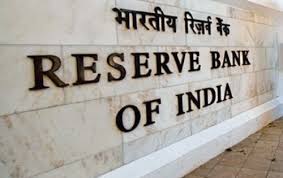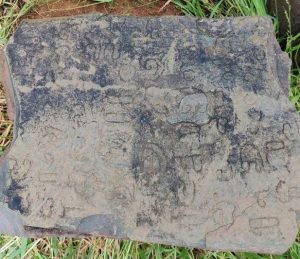Daily Current Affairs for Government Exams:
Today Current Affairs: 1st September 2020 for UPSC IAS exams, State PSC exams, SSC CGL, State SSC, RRB, Railways, Banking Exam & IBPS, etc
Table of Contents
Contents:
- India’s economic growth:
- Reserve Bank of India (RBI) has announced several measures to ensure orderly market conditions and smooth financial conditions.:
- Renati Chola era :
- National Register of Citizens:
- Other important current affairs
1.India’s economic growth:

Data released by the National Statistical Office (NSO) showed GDP in the April-June quarter of 2020-21 slumped 23.9% compared with growth of 3.1% in the previous (January-March) quarter.
- It is the sharpest contraction since India started reporting quarterly data in 1996.
- Gross Value Added (GVA) growth rate also declined by 22.8% in the first quarter of this financial year.
- GDP is a measure of economic activity in a country. It is the total value of a country’s annual output of goods and services. It gives the economic output from the consumers’ side.
- GVA is the sum of a country’s GDP and net of subsidies and taxes in the economy.
Key points:
- Among major economies, India’s contraction was the sharpest.
- China, after posting a contraction in the January-March quarter has recovered with 3.2% growth in the April-June quarter. Globally, India is close to the UK’s contraction of 20.4% in the second quarter.
- Asia’s third-largest economy was already faltering when the pandemic struck. In April-June, it suffered a contraction for the first time since India began maintaining quarterly records in 1996.
- Agriculture was the only bright spot. The sector, which has benefited from a robust monsoon, rose an annual 3.4% in the June quarter compared with a growth of 3% in the June quarter of 2019-20.
- On a quarterly basis, recession deepened in the manufacturing sector as it posted four consecutive quarters of contraction while the construction sector declined for the third quarter in a row. Economists define a recession as two consecutive quarters of negative growth.
- The manufacturing sector, which has been in the grip of a sharp slowdown, fell 39.3% in the June quarter while construction slumped 50.3% during the three-month period.
- Trade, hotels, transport, and communications sector posted the second-highest contraction, declining 47% in the June quarter.
- The services sector, which accounts for nearly 60% of the economy, slumped 20.6% in the June quarter, compared to a 4.4% growth in the previous. Services such as hotels, restaurants, hospitality, and airlines, have borne the maximum brunt.
- Private consumption, a key driver of the economy witnessed a sharp decline of 24.5% in the first quarter from an 8.5% increase in the year ago period.
- However, government consumption saw a 20.2% increase in the June quarter compared with the 9.5% growth in the same quarter of the previous year. This highlights the role of government spending in supporting the economy.
2. Reserve Bank of India (RBI) has announced several measures to ensure orderly market conditions and smooth financial conditions.:

These measures include two more tranches of special Open Market Operations (OMOs) in bonds and a hike in the Held-To-Maturity (HTM) limit under the Statutory Liquidity Ratio (SLR) for banks.
- The move has been termed as ‘Operation Twist’.
- Operation Twist is the name given to a USA Federal Reserve monetary policy operation, which involves the purchase and sale of government securities to boost the economy by bringing down long-term interest rates.
- It is now being used for similar measures taken by RBI in the Indian context as well.
- OMOs: RBI will conduct additional special open market operations for an aggregate amount of Rs. 20,000 crore.
- RBI conducted OMOs in March as well.
Open Market Operations
- Open Market Operations is the simultaneous sale and purchase of government securities and treasury bills by RBI.
- The objective of OMO is to regulate the money supply in the economy.
- RBI carries out the OMO through commercial banks and does not directly deal with the public.
- OMO is one of the quantitative tools that RBI uses to smoothen the liquidity conditions throughout the year and minimize its impact on the interest rate and inflation rate levels.
- Quantitative tools control the extent of the money supply by changing the Cash Reserve Ratio (CRR), or bank rate or open market operations.
- Qualitative tools include persuasion by the Central bank in order to make commercial banks discourage or encourage lending which is done through moral suasion, margin requirement, etc.
- Term Repo Operations: RBI will also conduct term repo operations for an aggregate amount of Rs. 1,00,000 crore at the prevailing repo rate in the middle of September to ease liquidity pressures on the market.
- In order to reduce the cost of funds, banks that had availed of funds under Long-Term Repo Operations (LTROs) may exercise the option of reversing these transactions before maturity.
- LTRO is a tool that lets banks borrow one to three-year funds from the RBI at the repo rate, by providing government securities with similar or higher tenure as collateral.
- Thus, the banks may reduce their interest liability by returning funds taken at the repo rate prevailing at that time (5.15%) and availing funds at the current repo rate of 4%.
- Increase in HTM limit: RBI raised the limit on bonds held-to-maturity (HTM) to 22% from 19.5% of Net Demand and Time Liabilities (NDTL). This means banks will have room to buy more bonds without bothering about short-term fluctuations in yields.
- HTM securities are the debt securities acquired with the intent to keep it until maturity.
3.Renati Chola era :

A rare inscription dating back to the Renati Chola era has been unearthed in a remote village of Kadapa district of Andhra Pradesh.
- The inscription was found engraved on a dolomite slab and shale, which are part of a fragmentary pillar excavated from a farmer’s field.
- Dolomite is a sedimentary carbonate rock composed mostly of calcium magnesium carbonate.
- Shale or mudstone is a fine-grained sedimentary rock that forms from the compaction of silt and clay-size mineral particles.
- The inscription was written in archaic Telugu.
- It was assigned to the 8th Century AD, when the region was under the rule of Chola Maharaja of Renadu.
- The inscription seems to throw light on the record of a gift of six Marttus (a measuring unit) of land to a Brahmin Priest. Some lines are indicative of the priority given to morality in those days.
- In July 2020, the Archaeological Survey of India (ASI) had found the exact location of Renati Cholas’ capital in Kadapa district of Andhra Pradesh.
- ASI deciphered two inscriptions of Renati Cholas belonging to the 7th century.
- The first inscription speaks of their capital Erikal in the Kamalapuram region in Kadapa, while the other speaks about the battle of Renati Cholas and Banas.
Renati Cholas:
- The Telugu Cholas of Renadu (also called as Renati Cholas) ruled over Renadu region, the present day Kadapa district.
- The earliest of this family was Nandivarman (500 AD).
- Renandu Cholas were the feudatories of the Chola dynasty.
- These kings claimed that they belonged to Karikala Chola’s dynasty.
- They are said to be the first kingdom to use Telugu in administration and inscriptions, instead of Sanskrit.
4.National Register of Citizens:

The Assam government remains firm on its demand of 10-20% re-verification of the nationality claims made by some of the people included in the final National Register of Citizens (NRC), published in 2019.
- The state government’s plea for the re-verification is lying pending in Supreme Court (SC) for more than a year and the apex court is yet to stamp its approval on it.
- The NRC 2019 is yet to be approved by the Registrar General of India.
- The state government of Assam has provided the latest data regarding ‘foreigner’ detection in the state.
- 1,36,149 people have been declared ‘foreigners’ by the state’s 100 functioning Foreigners’ Tribunals, whereas only 227 ‘foreigners’ have been deported from 13th March 2013 to 31st July 2020.
- A total of 425 people are currently lodged in the six detention centers in the state.
- There is a need for re-verification because the people of Assam want a correct NRC.
- Also, there has been a delay in issuing the rejection slips to the over 19 lakh excluded people so that they can move the court to claim nationality.
- Officials have cited the Covid-19 pandemic and the floods in the state as reasons for the delay.
- The rejection slips would carry the reason for rejection, which would differ from person to person, and based on the reason they would be able to challenge their exclusion in the Foreigners’ Tribunals.
- Every individual, whose name does not figure in the final NRC, can represent his/her case in front of the Foreigners Tribunals.
In 2018, the SC mentioned the prospect of sample re-verification in order, saying that it could consider re-verifying 10% of the names included in the NRC.
- In July 2019, the state government gave an affidavit in the SC seeking a re-verification of 20% included names in the districts bordering Bangladesh and 10% in the rest of the districts.
- However, it was dismissed after the erstwhile coordinator of the NRC submitted that re-verification was already done.
National Register of Citizens
- NRC is a register prepared in respect of each village, showing the houses or holdings in serial order and indicating against each house or holding the number and names of persons staying therein.
- The register was first prepared after the 1951 Census of India and since then it has not been updated until recently.
- It has been updated in Assam only for now and the government plans to update it nationally as well.
- Purpose: To separate “illegal” immigrants from “legitimate” residents.
- Nodal Agency: Registrar General and Census Commissioner India.
Other important current affairs:
1. Japan has committed an official Development Assistance loan of 3,500 crore rupees for the COVID-19 Crisis Emergency Response Support to India.
- Japan International Cooperation Agency, JICA is a governmental agency that coordinates Official Development Assistance for the Government of Japan.
- This program loan aims to support India’s efforts in fighting COVID-19 and to prepare the health system to manage future epidemics.
- India and Japan have had a long and fruitful history of bilateral development cooperation since 1958. The recent step further consolidates and strengthens the Strategic and Global Partnership between India and Japan.
2. The Supreme Court has allowed states to grant the benefit of reservation of seats to in-service doctors in the National Eligibility cum Entrance Test (NEET) postgraduate degree courses.
- The five-judge Constitution Bench of the apex court also held that the Medical Council of India (MCI) has no power to provide or not provide reservation for in-service doctors in admission to PG courses.
- MCI is a creation of a statute under Entry 66 of List-I of the Constitution and its role is to coordinate and determine the standards of medical education.
- Entry 66 of List-I: Coordination and determination of standards in institutions for higher education or research and scientific and technical institutions.
3. Air Force Sports Control Board was conferred with ‘Rashtriya Khel Protsahan Puruskar 2020’ for the outstanding contribution in helping sportspersons to excel in their respective disciplines and implement robust sports welfare measures.
Rashtriya Khel Protsahan Puruskar:
- The Rashtriya Khel Protsahan Puruskar scheme was introduced by the government in 2009 to encourage the involvement of corporates and sports promotion boards in the development of sports in the country.
- The Union Ministry of Youth Affairs & Sports has revised the Scheme of Rashtriya Khel Protsahan Puruskar in the year 2015.
4. A recent study published in the journal Scientific Reports has found that the tree ‘African Baobab’ has 168 chromosomes. Previous studies estimated that the tree has between 96 and 166 chromosomes.
- The study will be useful in genetic conservation efforts.
- Type of Trees: Baobabs are deciduous trees ranging in height from 5 to 20 meters.
- Deciduous forest is vegetation composed primarily of broad-leaved trees that shed all their leaves during one season.
- Found in: The African baobab (Adansonia digitata) is one of the nine species of baobab and is native to mainland Africa. They are also found in African Savannah.
5.CSIR-CMERI have developed the World’s Largest Solar Tree, which is installed at CSIR-CMERI Residential Colony, Durgapur.
- The installed capacity of the Solar Tree is above 11.5 kWp.
- It has the annual capacity to generate 12,000-14,000 units of Clean and Green Power, West Bengal.
- 017There are a total of 35 Solar PV Panels in each tree with a capacity of 330 wp each.
- The inclination of the arms holding the Solar PV Panels are flexible and can be adjusted as per requirement, this feature is not available in Roof-Mounted Solar facilities.
- Each Solar Tree will cost Rs 7.5 lakhs and the interested MSMEs can align their Business Model with the Pradhan Mantri Kisan Urja Suraksha even Utthan Mahabhiyan (PM KUSUM) Scheme for farmers, for developing a Renewable Energy based Energy Grid.




